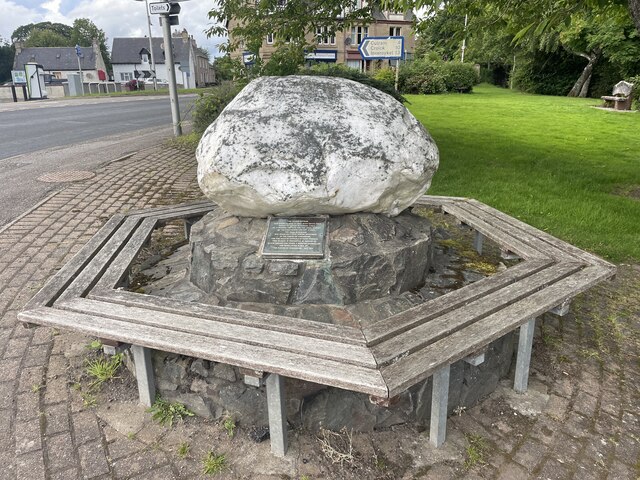The Clach Eiteag
Introduction
The photograph on this page of The Clach Eiteag by Ralph Greig as part of the Geograph project.
The Geograph project started in 2005 with the aim of publishing, organising and preserving representative images for every square kilometre of Great Britain, Ireland and the Isle of Man.
There are currently over 7.5m images from over 14,400 individuals and you can help contribute to the project by visiting https://www.geograph.org.uk

Image: © Ralph Greig Taken: 12 Aug 2023
The Clach Eiteag, ( stone of white pebble) is the name given to a celebrated natural boulder of irregular shape of a pure white quartzite but it is impossible to give a precise geological provenance, and it may well have been carried by glacial movement. This type of rock is exceptional in Easter Ross and outstanding in its white colour. Local tradition firmly holds that an annual fair was held wherever the Clach Eiteag happened to be at the time. As a local fair was a considerable asset to any village, it is said that the stone was secretly moved from parish to parish. Stories tell that it originated in Assynt, famous for its quartz, was moved to Invershin, to Bonar Bridge and then to Kincardine parish. We know that an annual fair was already established in this parish by the middle of the 18th century and must assume the Clach Eiteag was in the parish by that date. As the fair was called the Feill Eiteachan and took its name from the burn that runs near the old church of Kincardine, it is reasonable to believe the fair was held near this church. After the building of Telford's bridge at Bonar, in 1812, the present village of Ardgay became the junction of roads leading east, north and west and also the centre of population; an old farmhouse was enlarged into an hotel in 1817 and it seems likely that the Clach Eiteag was then built into its wall, to prevent any possible theft and thus establish the Feill Eiteachan in Ardgay. The stone remained in the north wall of the ruin of Balnagown Arms Hotel in Ardgay in the parish of Kincardine until 1958, when it was set upon a plinth and proudly displayed in the village.

